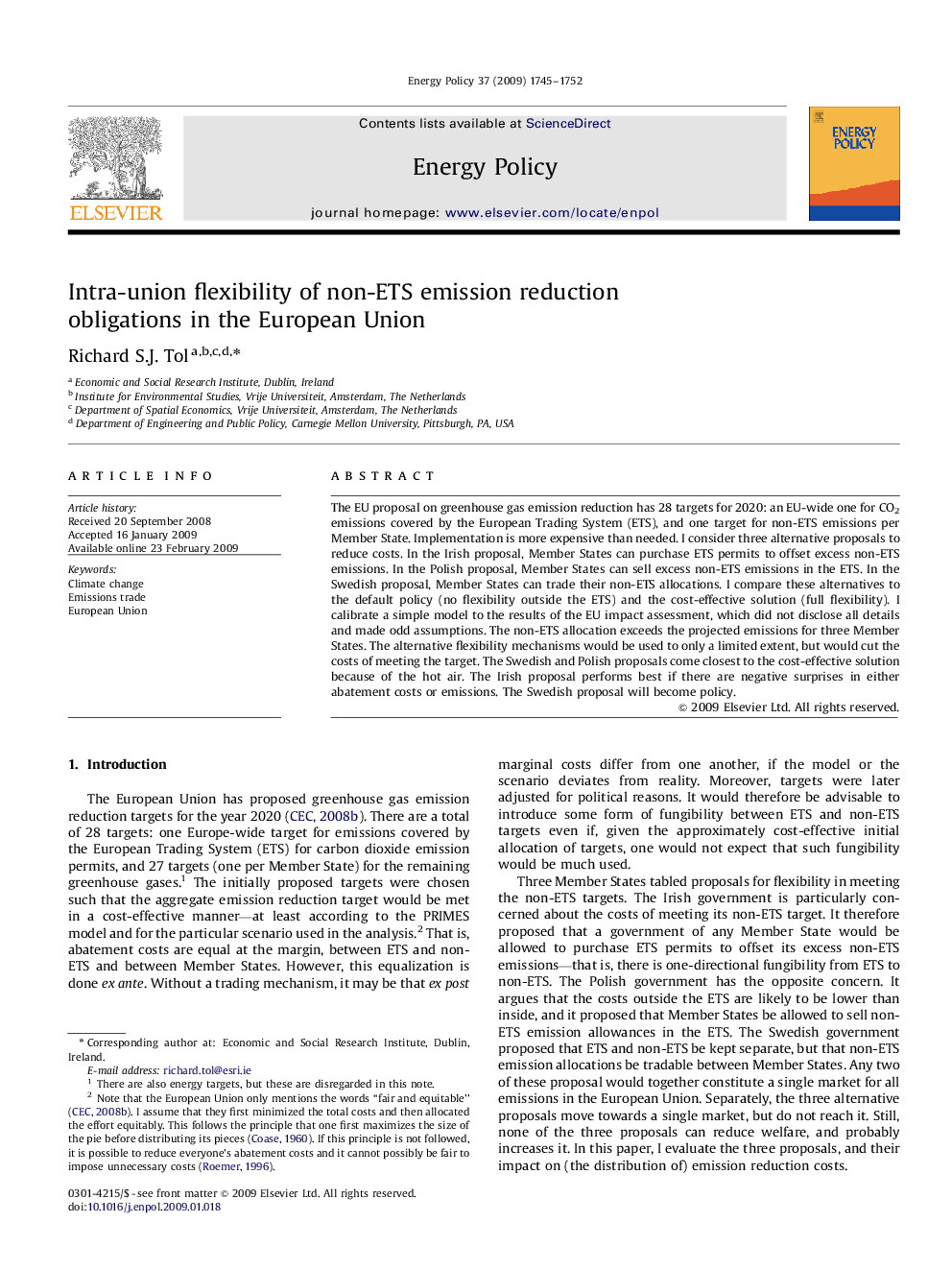| Article ID | Journal | Published Year | Pages | File Type |
|---|---|---|---|---|
| 996908 | Energy Policy | 2009 | 8 Pages |
The EU proposal on greenhouse gas emission reduction has 28 targets for 2020: an EU-wide one for CO2 emissions covered by the European Trading System (ETS), and one target for non-ETS emissions per Member State. Implementation is more expensive than needed. I consider three alternative proposals to reduce costs. In the Irish proposal, Member States can purchase ETS permits to offset excess non-ETS emissions. In the Polish proposal, Member States can sell excess non-ETS emissions in the ETS. In the Swedish proposal, Member States can trade their non-ETS allocations. I compare these alternatives to the default policy (no flexibility outside the ETS) and the cost-effective solution (full flexibility). I calibrate a simple model to the results of the EU impact assessment, which did not disclose all details and made odd assumptions. The non-ETS allocation exceeds the projected emissions for three Member States. The alternative flexibility mechanisms would be used to only a limited extent, but would cut the costs of meeting the target. The Swedish and Polish proposals come closest to the cost-effective solution because of the hot air. The Irish proposal performs best if there are negative surprises in either abatement costs or emissions. The Swedish proposal will become policy.
